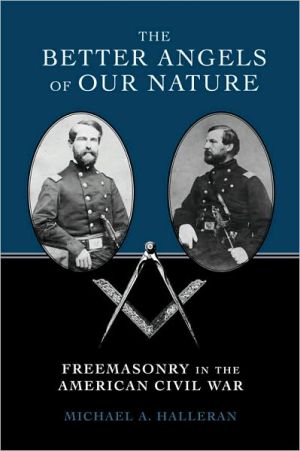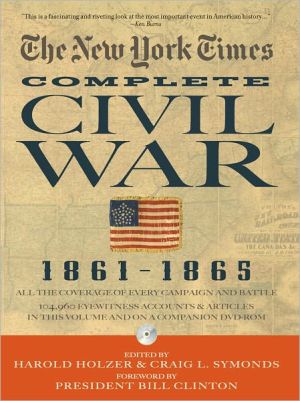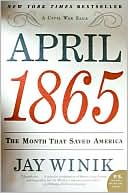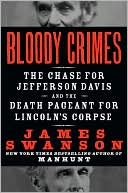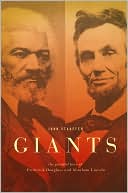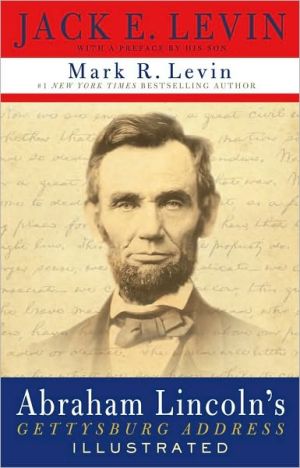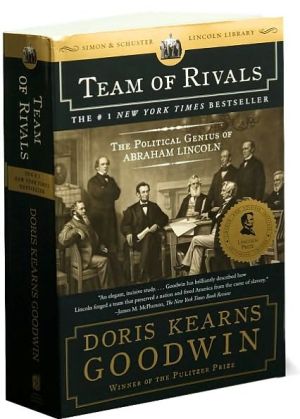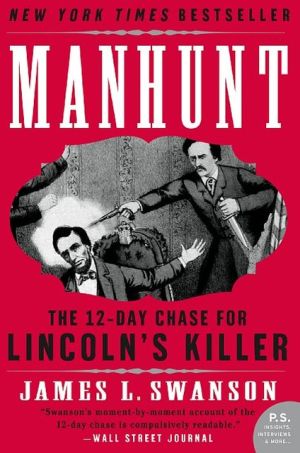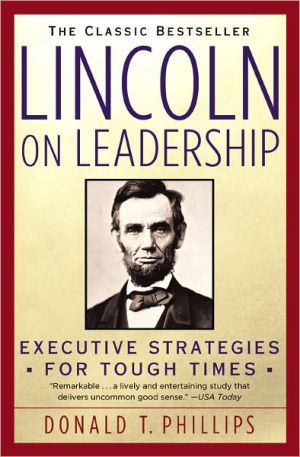The Better Angels of Our Nature: Freemasonry in the American Civil War
The first in-depth study of the Freemasons during the Civil War\ \ One of the enduring yet little examined themes in Civil War lore is the widespread belief that on the field of battle and afterward, members of Masonic lodges would give aid and comfort to wounded or captured enemy Masons, often at great personal sacrifice and danger. This work is a deeply researched examination of the recorded, practical effects of Freemasonry among Civil War participants on both sides.\ \ From...
Search in google:
The Better Angels of Our Nature\ Free masonry in the American Civil War \ \ By Michael A. Halleran \ THE UNIVERSITY OF ALABAMA PRESS\ Copyright © 2010 Michael A. Halleran\ All right reserved.\ ISBN: 978-0-8173-1695-2 \ \ \ Chapter One\ Masters and Fellows \ A good true oath he must there swear To his master and his fellows that be there; He must be steadfast and true also To all this ordinance, wheresoever he go, And to his liege lord the king, To be true to him over all thing. And all these points here before To them thou must need be sworn, And all shall swear the same oath Of the masons, be they lief be they loath -The Regius Poem (Halliwell MS) ca. 1390\ What Is Free masonry?\ The history of Free masonry is beyond the scope of this work, yet in order to determine its influences during the American Civil War, some brief explanation of the institution is required. Variously known as Free masonry, Masonry, or the Craft, its beginnings are lost to history. Although its members claim to be the oldest surviving fraternal organization in the world, with a heritage stretching back to early medieval or even Biblical times, there is little solid evidence to support that assertion. Freemasonry can, however, be easily traced to sixteenth-century Edinburgh, although the first Masonic governing body was not founded until 1717 in London. By 1723, the Constitutions of the Freemasons were assembled and published and although that document explicitly refers to an alleged meeting of stonemasons in England assembled by Prince Edwin, the son of the tenth-century Saxon king Athelstan, there is no supporting evidence to this claim. Despite this, theories that the fraternity is much older than the Age of Enlightenment exist, and most historians accept that the Craft is descended from the medieval stonemason's guilds. According to historian David Stevenson, the starting point in tracing the origins of Freemasonry can be found in the medieval trades in England. "Like other Medieval trades the masons had their craft organisations or guilds, and their mythical histories stressing the antiquity and importance of their crafts, closely linking them with religious and moral concepts." But, he states, the English masons were particularly elaborate in their mythical trade history, and these contributions-of legend and organization-formed the perfect ingredients for the development of the fraternity, which took place, he argues, not in England, but in Scotland. Scholars of Free masonry appear to agree with this assessment:\ Relatively little is known about the origins of Free masonry. It is clear that the fraternity has, to some extent, its antecedents in the ancient stonemason's guilds of medieval Europe, but an exact pedigree has thus far eluded Masonic scholars. What is known is that Scottish Free masonry transitioned from a trade guild into a social club. It may be assumed that English Free masonry followed suit at a similar time and in like manner, but this remains unproven. It is clear however, that the social club reflected Enlightenment sensibilities while retaining the organizational structure of a union. The most notable of these labor features are three levels, or "degree," of lodge membership corresponding to a typical craftsman's career; 1?, Entered Apprentice, 2?, Fellow Craft (or Journeyman), and 3?, Master Mason. Historian Margaret Jacob asserts that no proof exists to place Freemasonry in a medieval context but supports the conclusions of Stevenson that Free masonry was refined in Scotland. "That evolution, to this day only partially understood, makes for a fascinating story ... with the example of one Scottish lodge. The lodge in Dundee, Scotland, experienced the transformation from a guild, or lodge, of workingmen-'operatives' as they are called in Masonic literature-to a private society of 'free and accepted' masons within a few decades, from roughly 1700 to 1730."\ Although its origins remain disputed, it is clear that during the Enlightenment, new lodges sprang up throughout Europe and America and membership grew. The first American lodge was chartered in Boston, Massachusetts, in 1733. As Masonry became a new social force, Masons were at pains to demonstrate its respectability. According to Jacob, "in the face of rival and purely aristocratic orders of medieval origin, Continental Freemasons sought a careful reconstruction of a history they believed extended back to Hiram, the builder of Solomon's Temple. They went on to tie the history of their fraternity to the Crusades, then to the Knights Templar, and finally they picked up the story again in seventeenth-century England. We have manuscript histories by French Freemasons stating, almost in passing, that Freemasonry was associated with Oliver Cromwell." These reconstructionist tendencies, endemic in the fraternity to a certain extent even today (see chapter 7), have frustrated serious scholars of Freemasonry and have defied attempts to explain its significance.\ A great many definitions have been applied to Masonry over the last three hundred years, but these descriptions are of little utility. Many are heavily tinged with dubious assertions, and popular accounts in print or on screen focus on ritualistic bric-a-brac that contributes little to our understanding of the nature of the fraternity. Masonic authors, to be sure, have written voluminously about the character of the institution, but many of them fall victim to their preoccupation with exploring mystical esoterica, or attempting to antedate the origins of the Craft to ancient rites of the classical or preclassical world. These "histories" are so couched in the arcana of the fraternity as to be almost useless. The Masonic scholar Samuel Hemming (1757-1828), for example, declared that Free masonry was a "system of morality, veiled in allegory and illustrated by symbols," and while this definition has been widely accepted by Masons the world over, it reveals little. Another prominent Masonic scholar, Albert G. Mackey (1807-81), declared that Free masonry was first and foremost "a science which engages us in the search after divine truth, and which, if rightly understood, enables us to assist that search by a knowledge of what was done in the same great labor [by] the symbolism of the ancient sages," but that the institution was also religious in character. "The very science which it inculcates is in itself the science of religion. Not a religion of forms and creeds, but a universal religion, whose theology embraces the important dogmas of a Supreme Creator, and of a future existence ... and, hence, the religion of Free masonry is its science, and its science is its religion."\ Mackey maintained that Masonry was a dual-purpose social institution. On one level, the organization functioned as a charitable institution providing for the relief of members and nonmembers alike. On another level, Masonry met mankind's instinctive need to associate. This association, according to Mackey, allowed Masons to shed individual social distinctions and prejudices-"the imbecility of the individual"-and meet one another as equals "upon one common level of brotherhood and equality." In the lodge, he wrote,\ friendship is cemented by a mystic bond, and strifes, and envies, and jealousies are discarded, while the only contention that exists is that noble emulation of who can best work and best agree. And this 'mystic bond' is not local nor confined in its influences to any narrow limits ... in every nation a Mason may find a friend, and in every climate a brother. And thus, within these fraternal associations, spreading over the whole face of the globe, and existing in all the great national confederacies of the world ... are to be found men of all political parties, and of every religious faith, bound together for one common purpose.... And when 'wars and rumors of wars' are desolating the nations of the earth, in their happy retreats of peace and concord, the brethren of the mystic ties assemble to meditate on the sublime truths of religious science, and to promote those virtues, whose fruits are friendship, morality and brotherly love.\ Yet Mackey's definition, as well as the theories propounded in the bulk of Masonic writing, convey little real information about the particulars of the organization, and until recently the non-Masonic academic world offered little more. Despite the fact that formally organized Free masonry has existed since at least 1717, the fraternal structure and its implications in society have attracted little attention or interest from scholars, and social scientists have only recently regarded Free masonry as a worthy subject for investigation. In 1875, Charles W. Heckethorn authored one of the first notable studies concerning Masonry and similar groups yet, to the modern reader, his Secret Societies of All Ages and Countries is practically unintelligible-as a sample of his explanation on the origins of the institution demonstrates. "Free masonry was early mixed up with the compagnonnage, and the construction of the Temple, which is constantly met with in the former, also plays a great part in the latter-a myth, undefined, chronologically irreconcilable, a poetic fiction, like all the events called historical that surround the starting-points of various sects; for sects, existing, as it were, beyond the pale of official history, create a history of their own, exclusive of, and opposed to, the world of facts."\ Although Heckethorn may be correct that the origins of Masonry are not to be found in the biblical or classical world (of which, more below), his presentation and analysis is so stilted as to be completely obscure to all but the most dedicated reader. Not until the twentieth century do any modern analyses place Free masonry in context within American society. In a 1940 inquiry titled "Secret Societies: A Cultural Study of Fraternalism in the United States," sociologist Noel P. Gist defined Free masonry in America as a "benevolent and philanthropic society," a cooperative brotherhood that provided companionship, charitable work on behalf of the needy and the unfortunate, social activities, and to a limited extent a guarantee of social and economic well-being among its members who had fallen on hard times. In short, what we have come to understand as a fraternal organization.\ Gist's work was followed forty-four years later by that of the talented historian Lynn Dumenil. Her Freemasonry and American Culture, 1880-1930 provided students of fraternalism with a modern study addressing the fraternity in a scholarly manner without the allegorical mysticism of previous treatments. Dumenil summed up mainstream American Freemasonry succinctly as an all male, primarily native, mainly Protestant society concerned with meeting the social and personal needs of its members. She held that the "order was a quasi-religious secret society dedicated to the ideals of fraternity, charity, and moral behavior. It offered sociability, relief in times of distress, as well as possible financial and political advantages, but the most important aspect of Masonry was its commitment to moral uplift and self-improvement." As part of its message of moral rectitude, Dumenil found that Masonry used traditional values of "sobriety, thrift, temperance, piety, industry, self-restraint and moral obligation," a theme that had tremendous appeal in nineteenth-century America because it mirrored values that its members identified with.\ With the insight offered by Dumenil, Gist, and others, then, it is possible to characterize Free masonry in nineteenth-century America as an exclusively male fraternal organization of a spiritual or quasi-religious nature, which conducted its business behind closed doors. That this organization-which at first glance appears little more than a boys' club-should have any influence whatever during America's Civil War is a function of the popularity of fraternalism among nineteenth-century American men and the resulting large number of Masons directly involved in the conflict.\ The Fraternal Culture\ Fraternal organizations were increasingly popular by the middle of the nineteenth century, and their importance stems from the sheer number of men who belonged to them. The most prominent secret society in this period besides Free masonry was the Independent Order of Odd Fellows. Claiming a similar pedigree to Masonry, the first recorded Lodge of Odd Fellows began in England in 1745, and the first American lodge, Washington Lodge No. 1, was founded in Baltimore in 1819. Odd Fellowship quickly attracted new members because it was a benefit society. Odd Fellows who were taken sick could claim financial benefits from the lodge in the form of cash stipends paid weekly according to a scheduled table of benefits. Benefits paid to members were not considered charity, but rather a "right" of membership.\ Beyond the Odd Fellows there were a dozen or so lesser-known fraternities such as the United Ancient Order of Druids, founded in London in 1781; the Ancient Order of Foresters, established in 1813; the Society of Red Men, also founded in the same year; or the Ancient Order of Hibernians, organized in 1836. Occasionally, fraternal societies evolved from social clubs and became political actors. The nativist Order of the Star Spangled Banner, often referred to as the Know-Nothings, originated in 1849 as an oath-bound secret society but later became a political party enjoying brief success and some regional and national prominence, whose members were instructed to claim that they "knew nothing" about any secret society. The Knights of the Golden Circle was another political society. It advanced an agenda that included expansion of Southern American interests in a "golden circle" that included Mexico, the Caribbean, and parts of Central America, and later became enmeshed with the Northern Copperhead societies. Despite the varying attraction of these societies, Free masonry stood apart and its appeal was less tangible. Although Masonry was regarded as a charitable institution, it was not, unlike Odd Fellowship or other similar organizations, a benefit society. Masonry recognized the right of brethren to ask for, and receive, relief-financial or otherwise-but Masonry dispensed no stipends as rights of membership, nor did it have a schedule of benefits for sickness, disability, or death. While lodges could, and did, contribute to the relief of destitute brethren, their widows, or orphans, the payment of benefits was, and remains, outside the scope of the fraternity.\ Anti-Masonry and Masonry Rejuvenated\ The fortunes of Free masonry declined sharply-following one hundred years of steady growth-in 1826 when William Morgan, a disgruntled former Mason in Batavia, New York, announced his intent to publish and expose the Masonic ritual. Local Masons were outraged, and when Morgan disappeared suspicion fell upon the fraternity. It was claimed that a Masonic conspiracy had organized his kidnapping and eventual murder, and despite the fact that Morgan's body was never found, six men, all Masons, were brought to trial. Four were convicted but sentenced to only minor terms in jail. Subsequent disclosures that the sheriff, prosecutor, and many of the jurors were members of the fraternity ignited an anti-Masonic backlash that quickly spread across the country. The concept of the secret society was branded as subversive, and those associated with Masonry were publicly excoriated as corrupt and suspected of cronyism, or worse. Preachers railed from their pulpits that Masonry was sin, editors fulminated and published detailed exposés of Masonic rituals, and Masons in public life were openly questioned about how they could reconcile their secret obligations with their public duties. As a consequence, many men left the fraternity to avoid criticism.\ By 1828, a full-fledged political party-the Anti-Masonic Party-formed, with the extraordinary goal of eliminating Masonic influences from public life. When the anti-Mason firestorm finally burned itself out in 1836, in part because of the dishonest motives of its political leaders, American Masonry was moribund. Membership plummeted as lodges and Grand Lodges across the country shut their doors. In New York alone between 1828 and 1835 the number of Masonic lodges fell from 490 to just eighty, and active membership declined from 20,000 to 3,000.\ By the late 1840s, however, a renewed popular interest in Free masonry emerged as anti-Masonry and hostility to secret societies that had riveted the national attention span were replaced, at least in part, by other perceived threats, among them Irish-Catholic immigrants and the simmering national debate over slavery. Between 1850 and 1860 Free masonry rebounded vigorously, tripling its membership from 66,000 to 200,000 members in over 5,000 lodges nationwide. Masonry's reputation was restored, if only because so many men chose to become Masons, providing the American public with the indisputable respectability of numbers. Although it was still a secret society, for the first time in twenty years men openly wore the symbol of the fraternity-the square and compasses-from their watch chains and on their lapels.\ (Continues...)\ \ \ \ \ Excerpted from The Better Angels of Our Nature by Michael A. Halleran Copyright © 2010 by Michael A. Halleran. Excerpted by permission.\ All rights reserved. No part of this excerpt may be reproduced or reprinted without permission in writing from the publisher.\ Excerpts are provided by Dial-A-Book Inc. solely for the personal use of visitors to this web site. \ \
Contents Preface....................ixAcknowledgments....................xiiiIntroduction....................1Prologue....................81. Masters and Fellows....................312. Plures Ex Uno....................493. "If That Is Masonry I Will Take Some of It Myself"....................614. Saving the Life of the Enemy....................785. Gentlemen of the White Apron....................986. A More Decent Interment....................1287. All Passions Laid Aside?: Free masonry in the Army....................140Afterword....................159Notes....................167Glossary of Masonic Terms....................193Bibliography....................203Index....................223Photographs follow page....................122
